Wednesdays are Creative Arts days at our after school program, and this week we did crafts. (Other Creative Arts days are things like Lego Club or Readers’ Theater.)
I looked at instructions for making “real” kaleidoscopes (like here and here and here) but they all seemed a little too complex for my program.
Then I discovered these cool plastic mirror sheets! They are about $3 for a 6×9 flexible mirror. I cut them up with regular scissors (a paper cutter would work too) into smaller pieces for my projects. I was doubtful at first that they would reflect well, but they do really nicely.
I cut one mirror sheet into six 1 1/2″ x 6″ long rectangles and taped three together on their long edges. Then I talked to the kids about kaleidoscopes, and how they are all about mirrors and reflection, and took the three taped mirrors and curled them up into a triangle, taped them together, and let the kids look through. (6 pieces gives you 2 mirror tubes.)
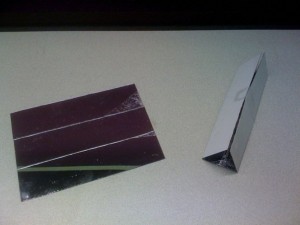
This really gave them an idea of what’s going on inside a kaleidoscope without having to construct the whole shebang with a tube. It was surprisingly interesting just to look at stuff around the room: patterns on our shirts, the lines on our palms.
After we looked through the triangle mirror tubes, I explained all the projects they could do.
Here’s their choices!
Mirror Op Art
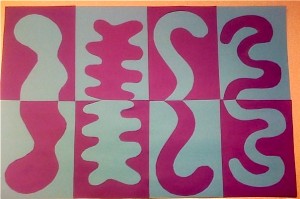
This is from the book Kids’ Art Works! Creating with Color, Design, Texture & More, by Sandi Henry.
I used 12×18 construction paper for the background, and cut 9×12 construction paper into quarters for the contrasting colors.
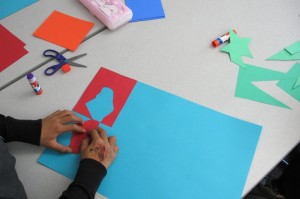
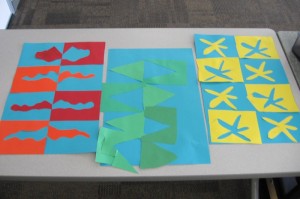
Punch Patterns
I brought in a bunch of my punches from home (all that scrapbooking stuff does come in handy), gave the kids construction paper strips and glue, and let them punch out shapes and arrange them on white paper in whatever patterns they wanted. If you didn’t have access to the punches, cutting small shapes freehand would also work, as would using stuff like sequins or spangles. (One of the reasons I chose punches is that we have 2 hours to fill, and I knew they would be interested in making the punches themselves.)
I cut a 6×9 mirror sheet into quarters, and taped 2 quarters together on their short edges. Duct tape is nice because it’s so flexible without being inclined to tear with use. This created two mirrors on a “hinge” that kids could open or shut into different angles. They could experiment with how using the mirrors in different ways reflected their punch patterns differently. (If I had had more money, I would have loved to give one of these mirror sets to each kid so they could keep playing at home.)

Mirror Pictures
When I was a kid, my sister and I had this really neat book called Make a Bigger Puddle, Make a Smaller Worm. It came with a mirror, and you used the mirror to play with the illustrations. Thanks, Mom, for saving it! My copy is totally falling apart, but I made color copies of all the pages and laminated them. I realize that my mom wasn’t able to save a copy for everybody, but check out the link; it’s to Google books and has a couple of sample pages…if you wanted, you could probably create some of your own. I cut the mirror sheet into thirds (3×6) and they were plenty big to use with these pictures.
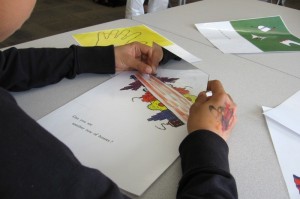
Giant Kaleidoscope
I used big roll paper and drew two huge circles, dividing them into 8 pie sections. I cut shapes in different colors in sets of 8 (eg, I had 8 blue circles, 8 orange lightning bolts, etc). We talked about how kaleidoscopes had repeating patterns, then each kid could choose 1 or 2 shape sets and glue one shape in each pie section. All I was going for was getting the shape in the same general area of each pie section:


But if your kids are up for it, or you have more time to spend on this activity, you can talk about how the two sections next to each other are mirror images, and place your shapes accordingly.
Mirror Name Mobile
This was our time filler at the end. Fold a piece of copy paper in half the long ways, and have the kids write their names along the folded edge. By folding and refolding and tracing, you can get the mirror image of their name on the opposite fold. Decorate, punch a hole in one end, tie on a yarn, and you have a mobile! You can see that the shape punches migrated from their own table to this one, and that the yarn was being used for more than hanging!
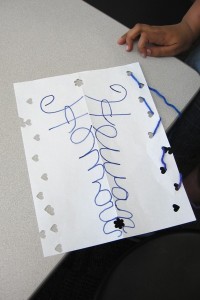
If you have computers for the kids to use, you can let them play with this online kaleidoscope painter. There’s a couple more: an easy one here and more complicated here. The marvelous Zefrank has two animated versions, simpler and more complex.
The other thing you could do is the Mirror Game, where two kids face each other, and one is the mirror and has to mimic everything the other kid does.
You could also watch Charlie Chaplin in the mirror maze, the mirror scene from the Marx Brothers’ Duck Soup, or Lucille Ball doing the mirror game with Harpo Marx.
Book connections…well, you could read how Alice goes through the mirror in Through the Looking Glass, or read Kitten’s First Full Moon by Henkes (which has a reflection of the moon as part of the story), or any of the folktales that have that reflected-moon concept.


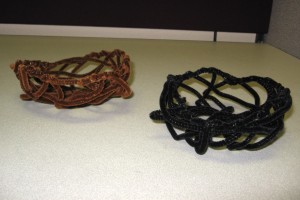
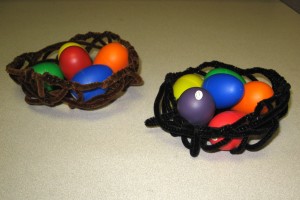
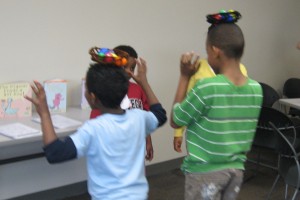
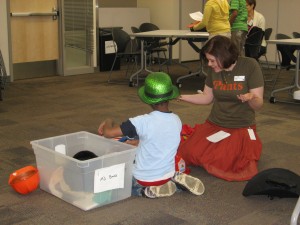
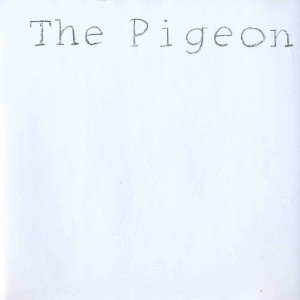


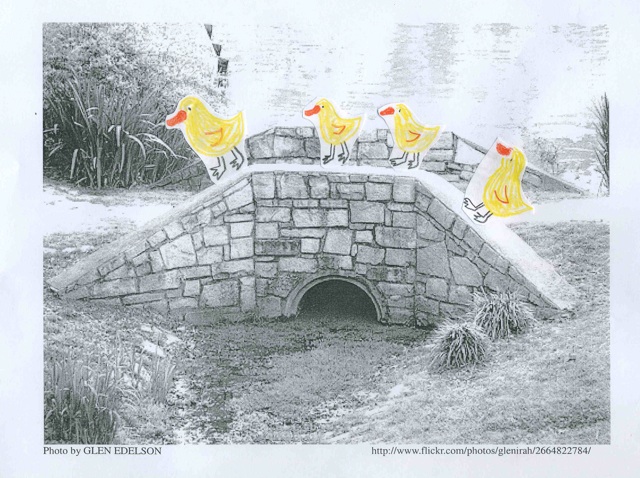
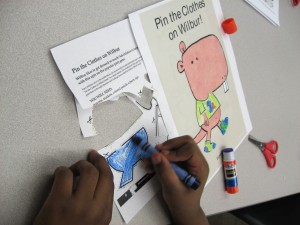
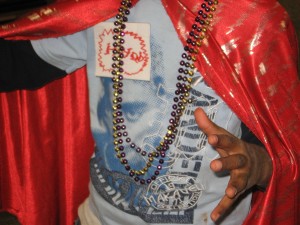
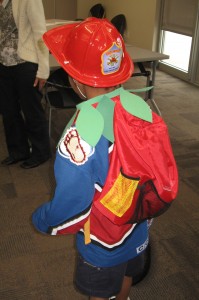

.jpg)
